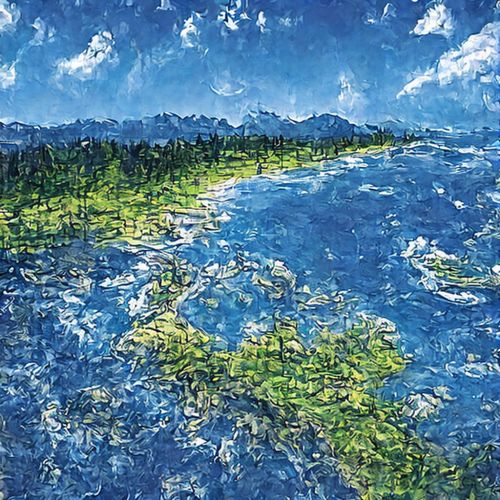Biogeochemical cycles
Introduction
Biogeochemical cycles represent the circulation and transformation of chemical elements and compounds in the biosphere. These cycles involve biological, geological, and chemical interactions and play a crucial role in maintaining the planet's habitability. The term "biogeochemical" is derived from the involvement of biological, geological, and chemical factors in these cycles.
Overview
Biogeochemical cycles are natural processes that allow the transfer and recycling of matter in an ecosystem. These cycles involve the movement of elements from the environment to organisms and back to the environment, often in complex pathways. The key biogeochemical cycles include the carbon, nitrogen, oxygen, phosphorus, sulfur, and water cycles.
Carbon Cycle
The carbon cycle is one of the most critical biogeochemical cycles, involving the movement of carbon—a key element of life—through the biosphere. Carbon is found in various forms, including carbon dioxide in the atmosphere, organic matter in living and dead organisms, carbonates in oceans, and fossil fuels in the earth's crust.


Nitrogen Cycle
The nitrogen cycle involves the transformation of nitrogen from its inert atmospheric form (N2) into forms usable by living organisms, such as ammonia (NH3), nitrite (NO2-), nitrate (NO3-), and organic nitrogen. This cycle is primarily driven by bacteria through processes such as nitrogen fixation, nitrification, and denitrification.
Oxygen Cycle
The oxygen cycle involves the movement of oxygen within and between its major reservoirs: the atmosphere, the biosphere, and the earth's crust. The main driving process in the oxygen cycle is photosynthesis, which generates oxygen as a byproduct.
Phosphorus Cycle
The phosphorus cycle is unique among biogeochemical cycles because it does not include a gas phase. Phosphorus moves in a cycle through rocks, water, soil, and sediments and into living organisms. Phosphorus is essential for life as it is a critical component of DNA, RNA, ATP, and also the phospholipids that form all cell membranes.
Sulfur Cycle
The sulfur cycle involves the movement of sulfur through the biosphere. The atmosphere is the smallest reservoir of sulfur, and the organic matter of biomass and the lithosphere are the largest. Sulfur can be found in various forms, including sulfur dioxide (SO2) and hydrogen sulfide (H2S) in the atmosphere, sulfate (SO4) in water, and pyrite (FeS2) in rocks.
Water Cycle
The water cycle, also known as the hydrologic cycle, describes the continuous movement of water on, above, and below the surface of the Earth. The water cycle involves processes such as evaporation, condensation, precipitation, infiltration, surface runoff, and subsurface flow.
Human Impact on Biogeochemical Cycles
Human activities have significantly altered biogeochemical cycles. For example, the burning of fossil fuels and deforestation have increased the amount of carbon dioxide in the atmosphere, contributing to global warming. Similarly, the use of nitrogen-based fertilizers has disrupted the nitrogen cycle, leading to water pollution and eutrophication.
Conclusion
Understanding biogeochemical cycles is essential for predicting how ecosystems will respond to changes in the environment, such as those caused by human activities. These cycles are complex and involve many interactions between the biosphere, geosphere, and atmosphere. By studying these cycles, scientists can develop strategies to mitigate the impacts of human activities on these vital processes.
